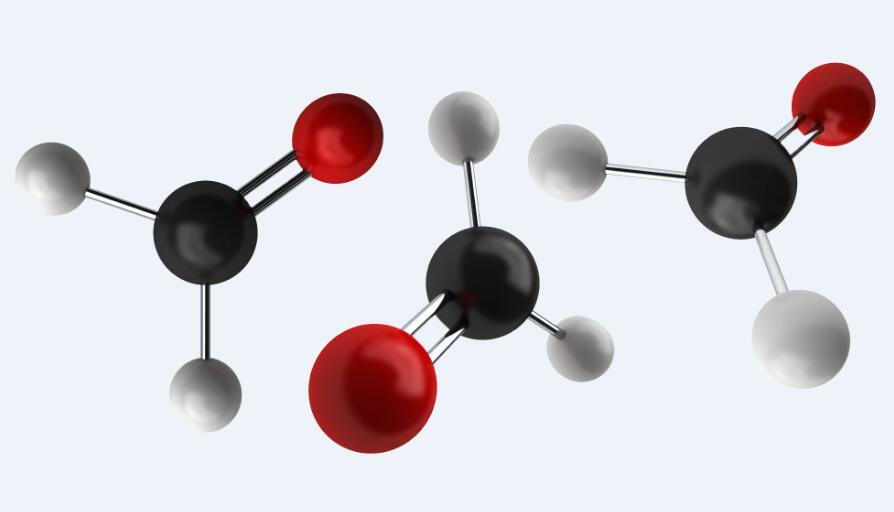Radiation-initiated reactions can be categorically classified as two types: (1) crosslinking and scissionand (2) grafting and curing.

Crosslinking is the intermolecular bond formation of polymer chains. Thedegree of crosslinking is proportional to the radiation dose. It does not require unsaturated or other morereactive groupings. With some exceptions (as in polymers containing aromatics), it does not vary greatlywith chemical structure. It does not vary greatly with temperature. Although the mechanism of cross-linking by radiation has been studied since its initial discovery, there is still no widespread agreement onits exact nature. The mechanism of crosslinking generally varies with the polymers concerned. Theuniversally accepted mechanism involves the cleavage of a C–H bond on one polymer chain to form ahydrogen atom, followed by abstraction of a second hydrogen atom from a neighbouring chain toproduce molecular hydrogen. Then the two adjacent polymeric radicals combine to form a crosslink.The overall effect of crosslinking is that the molecular mass of the polymer steadily increases withradiation dose, leading to branched chains until, ultimately a three-dimensional polymer network isformed when each polymer chain is linked to another chain.
In contrast, scission is the opposite process of crosslinking in which the rupturing of C–C bondsoccurs. Crosslinking increases the average molecular weight whereas the latter process reduces it. If theenergy of the radiation is high, chain breaking occurs through the cleavage of C–C bond. In aeratedsolution medium, however, the mechanistic way of scission proceeds through indirect manner. Thepolymeric free radicals are generated by solvent-free radicals, which are already formed by radiation.The addition of oxygen with the polymeric free radicals forms the peroxy species, which on decom-position forms smaller molecules. The oxidative degradation of the polymers depends upon the solventused in the system. Actually, the polymer degradation competes with the oxidation of the solvent.
Grafting is a method where monomers are introduced laterally on to the polymer chain where ascuring is the rapid polymerisation of an oligomer monomer mixture to form a coating, which is essen-tially bonded by physical forces to the substrate. In the simplest form, such methods involveheterogeneous systems, the substrate being a film, fibre or even a powder, with the monomer as aneat liquid, vapour or solution. There is a close relationship between grafting and curing althoughthere are certain differences. Actually, there is no time limit for the process of grafting. It can takeminutes, hours or even days, whereas curing is a usually very rapid process occurring in a fraction ofsecond. In grafting, covalent C–C bonds are formed whereas in curing, bonding usually involves weakervan der Waals or London dispersion forces. van der Waals bonding operate at distances where there islittle or no overlap or exchange and it is generally associated with smaller energies. However, covalentbonding, is effective at small internuclear distances and is associated with electron overlap, exchange,and consequently higher energies. Another important aspect of curing reactions is the possibility thatconcurrent grafting with curing occurs leading to improved properties of the finished product, particu-larly in adhesion and flexibility.
Grafting proceeds in three different ways: (a) pre-irradiation; (b) peroxidation and (c) mutual irradia-tion technique. In the pre-irradiation technique, the first polymer backbone is irradiated in vacuum or inthe presence of an inert gas to form free radicals. The irradiated polymer substrate is then treated with the monomer, which is either liquid or vapour or as a solution in a suitable solvent. However, in theperoxidation grafting method, the trunk polymer is subjected to high-energy radiation in the presenceof air or oxygen. The result is the formation of hydroperoxides or diperoxides depending on the nature ofthe polymeric backbone and the irradiation conditions. The peroxy products, which are stable, are thentreated with the monomer at higher temperature, whence the peroxides undergo decomposition toradicals, which then initiate grafting. The advantage of this technique is that the intermediate peroxyproducts can be stored for long periods before performing the grafting step. On the other hand, with themutual irradiation technique the polymer and the monomers are irradiated simultaneously to form thefree radicals and thus addition takes place. Since the monomers are not exposed to radiation in the pre-irradiation technique, the obvious advantage of that method is that it is relatively free from the problemof homopolymer formation which occurs with the simultaneous technique. However, the decideddisadvantage of the pre-irradiation technique is the scission of the base polymer due to its directirradiation, which brings forth predominantly the formation of block copolymers rather than graftcopolymers.
Post time: May-03-2017

